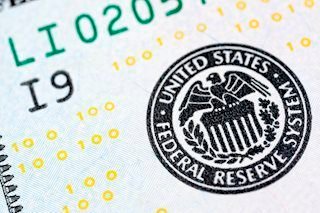
Michael Gregory, Deputy Chief Economist at BMO Capital Markets, notes that the next FOMC meeting is March 14-15 and currently, the market is pricing in around 40% odds of a move (average of fed funds futures and OIS on Bloomberg).
Key Quotes
“In the semi-annual Monetary Policy Report to the Congress, Yellen didn’t cover any new ground but did emphasize that “waiting too long to remove accommodation would be unwise, potentially requiring the FOMC to eventually raise rates rapidly, which could risk disrupting financial markets and pushing the economy into recession.” (Interpretation: Rate hikes are coming.) Yellen added that “incoming data suggest that labor market conditions continue to strengthen and inflation is moving up to 2 percent, consistent with the Committee’s expectations.” (Interpretation: They could be closer than you think.)”
“As for timing, the Fed head did proffer the phrase: “At our upcoming meetings, the Committee will evaluate whether employment and inflation are continuing to evolve in line with these expectations, in which case a further adjustment of the federal funds rate would likely be appropriate.” Notice the word “meetings” not “meeting”, which appeared to put the non-SEP/presser May 2-3 meeting in play, if there was no move in March.”
“In addition to some sturdy economic indicators, the CPI for January was faster than expected, which also stoked rate hike expectations. The headline rate rose to 2.5% y/y from 2.1%, the fastest pace in nearly five years, pumped by gasoline prices. The core CPI nudged up a tenth to 2.3% y/y, which was still in the 2.1%-to-2.3% range, where it’s been for the past 14 months. Core PCE was stuck in the 1.6%-to-1.8% range all last year. We judge that core inflation finally breaking above its recent ranges is a potential trigger for a pre-June rate hike. So too is the jobless rate falling back to, and then breaking below, its cyclical low (4.6% in November, but it has bumped up a tenth in each of the past two reports). It’s also hard to see the Fed standing still if equity market, consumer and business optimism continue to increase meaningfully.”
“However, “global economic and financial developments” could stay the Fed’s policy hand during the spring, if the data are not overly convincing, and global markets become jittery again. The Dutch election is also on March 15, with Geert Wilders and his eurosceptic, anti-immigration Party for Freedom in the lead. He’s calling for a “Patriotic Spring” in Europe, eyeing French and German elections. Next up is the first round of the French presidential election on April 23, with a potential run-off on May 7. Marine Le Pen (head of the eurosceptic, anti-immigration National Front) is currently in the lead, but polls suggest she would lose in a run-off. But “polls” didn’t do a great job in predicting the outcome of the Philippines election, Brexit vote and U.S. election. Keep in mind, “Frexit” is a more serious problem than Brexit, because France is a member of the euro area. On balance, we still judge the ever-cautious FOMC is more likely to move in June, but we have upped our odds of a pre-June hike (call it March 20%, May 25%, June 45%, and post-June 10%).”
Source by fxstreet.com
Hi! I am a robot. I just upvoted you! I found similar content that readers might be interested in:
https://www.fxstreet.com/news/fed-policy-beware-the-march-bmo-cm-201702231303